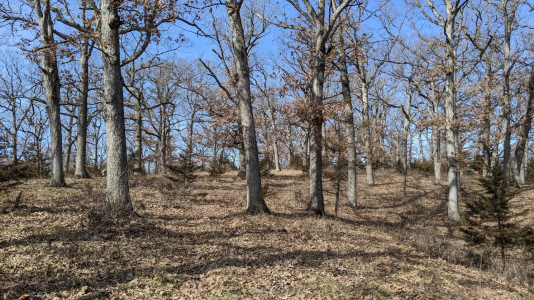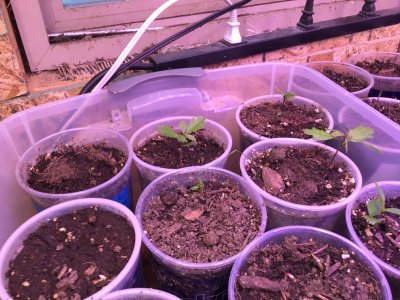Hoytvectrix
5 year old buck +
We have a couple sections of woods on the new farm that have had cattle throughout for the past 40 years or more. I am assuming at one point these areas were a mixed forest that was eventually clear cut except the hundreds of white, red, and black oaks that remain. There is almost zero understory, I am sure mostly because of the cattle.
Here is a panoramic view taken in February:
This is what it looks like in February:

This is what it looks like in September. Mostly grasses and some other low value woody and herbaceous plants:

I know that several habitat consultants have actually encouraged oak savannahs in some videos taken within the same area as this farm (in northern MO). However, there is almost no woody or herbaceous browse throughout the year and I feel like I can be using this area better. We have almost no younger oaks, but I am assuming those will start to get going now that cattle are no longer around. At some point I will work through the woods and start thinning out the cedars, but I am afraid of doing that all at once because it would be wide open. One positive thing about these sections of woods is that they are all south-facing, so I know that there are some deer that use them in the winter currently, and these areas have a lot of potential for holding more in the future.
I feel like a prescribed fire would likely help stimulate forbs, but does anyone have any experience with this sort of habitat niche?
Here is a panoramic view taken in February:
This is what it looks like in February:

This is what it looks like in September. Mostly grasses and some other low value woody and herbaceous plants:

I know that several habitat consultants have actually encouraged oak savannahs in some videos taken within the same area as this farm (in northern MO). However, there is almost no woody or herbaceous browse throughout the year and I feel like I can be using this area better. We have almost no younger oaks, but I am assuming those will start to get going now that cattle are no longer around. At some point I will work through the woods and start thinning out the cedars, but I am afraid of doing that all at once because it would be wide open. One positive thing about these sections of woods is that they are all south-facing, so I know that there are some deer that use them in the winter currently, and these areas have a lot of potential for holding more in the future.
I feel like a prescribed fire would likely help stimulate forbs, but does anyone have any experience with this sort of habitat niche?


